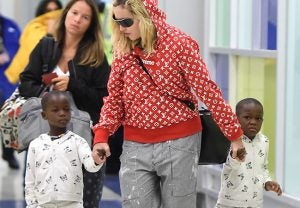
Human trafficking is a rising international epidemic that globally affects the lives of millions around the world and robs them of their dignity (unodc). Human trafficking by definition“involves the use of force, fraud, or coercion to obtain some type of labor or commercial sex act.” This multi-billion dollar industry has a rough estimate of taking 600,000 to 800,000 men, women, and children, who are then trafficked across international borders yearly. While the industry is heavily known for the purposes of trafficking others for sexual exploitation, forced labor, and child trafficking, thousands of victims are also trafficked for purposes of domestic servitude, child begging, or the removal of their organs (unodc). However, despite its best-known qualities of sexual exploitation, forced labor, and child trafficking, another potential form of human trafficking is child laundering.
Child laundering, although it is not yet recognized as a form of human trafficking it is the act in which, “children are illicitly obtained by fraud, force, or funds, and then processed through false paperwork into “orphans” and then adoptees. This potential form of human trafficking is an illegal act, that is typically conducted by an adoption agency or an adoption facilitator against the child’s will or the parents’ will (uslegal). To carry out this illegal act, the perpetrator may hide or falsify the child’s details by manipulating the child’s origin to make the child a legitimate orphan. Children who are victims of child laundering can also be trafficked by the many forms of kidnapping by force and/or trickery, bribery by political officials, and/or purchasing children by birth families. A recent form of this type of child laundering can be seen in the case of Paul Peterson.
Paul Peterson, former assessor of Maricopa County was found guilty and sentenced to five years in prison after being accused of running an illegal adoption scheme following an investigation. For over a decade, Peterson recruited, transported, and offered payment to dozens of pregnant women from the Marshall Islands to give up their babies for adoption in the United States. During his illegal adoption practice, Peterson charged adoptive families around $35,000 per adoption in his “get-rich-quick-scheme” (ice). It wasn’t until June 2020, that Peterson had pleaded guilty to his crimes and was convicted for multiple felony counts that included fraudulent schemes, artifices, and forgery. As of the year 2021, Paul Peterson is expected to serve 11-15 years in custody for his actions.
Other cases of child laundering, are stories of Ethiopian families in which they were made to believe that if they gave their child up, essentially for adoption, that the child would receive an education and would be able to return back home. Oftentimes these Ethiopian families were solicited by adoption agencies into giving their children up under false pretenses or women were coerced to relinquish their newborns. These frequent occurrences of child laundering, which has devastated many Ethiopian families had ultimately led the country to indefinitely suspend, and later banned, all adoptions to the United States. However, despite the child laundering cases of Paul Peterson, the laundering of Ethiopian children, or the many other cases of laundered children, the United States Department of States had declared that “buying children for adoption is not child trafficking since children are not “exploited” by such practices of forced labor or sexual interactions. 
Although, the United States and other countries don’t claim that child laundering isn’t a form of human/child trafficking, I ultimately believe that child laundering should be counted as a form of child trafficking. I state that child laundering should be seen as a form of human trafficking because these children are still being sold, kidnapped and trafficked, to their potential adoptive parents for a turn of profit. I also stand by the fact that child laundering should be seen as child trafficking due to the federal laws surrounding child sex trafficking. For instance, the law states that the use of interstates facilities to transmit information about a minor or the transportation of minors can be seen as a child trafficking offense, which in several cases adoption agencies or sellers have used interstate facilities to run their business. Lastly, child laundering should be categorized as human/child trafficking because we ultimately do not know what types of outcomes (forced labor, sexual interactions, abuse, etc.) these stolen children are being subjected to, therefore child laundering should be seen as a branch of human/child trafficking, even if the children are not being exploited by any means.
https://definitions.uslegal.com/c/child-laundering/